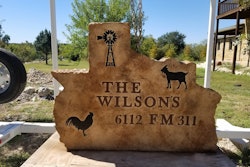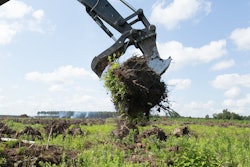 This GOES East satellite imagery, captured at 9 a.m. ET on Wednesday, Oct. 10, 2018, shows the storm less than 90 miles southwest of Panama City, Florida.
This GOES East satellite imagery, captured at 9 a.m. ET on Wednesday, Oct. 10, 2018, shows the storm less than 90 miles southwest of Panama City, Florida.Photo: NOAA
Hurricane Michael made landfall today as a Category 4 storm with 150 mph winds as it intensified over the Gulf of Mexico yesterday.
A Category 4 hurricane’s potential effects include well-built houses sustaining severe damage with loss of most of the roof structure. Trees will be snapped or uprooted, and power lines will be downed. Power outages will last weeks to possibly months. Most of the area will be uninhabitable for weeks or months.
According to records dating back to 1851, there has never been a Category 4 or Category 5 hurricane to make landfall in the Florida Panhandle, making Hurricane Michael the first.
“This is the worst storm the Florida Panhandle has seen in more than 100 years,” Florida Gov. Rick Scott told Weather.com.
States of emergency have been declared in Florida, Georgia and Alabama.
Scott said on Twitter: “The time for evacuating along the coast has come and gone. First responders will not be able to come out in the middle of the storm. If you chose to stay in an evacuation zone, you must SEEK REFUGE IMMEDIATELY.”
More than 375,000 people along the Gulf Coast have been ordered or urged to evacuate.
Hurricane Michael is predicted to bring heavy rain up to 12 inches and a storm surge up to 14 feet.
The storm is predicted to move quickly north through Georgia and the Carolinas on Thursday. Georgia can expect damaging winds and downed power lines while the Carolinas will experience heavy rainfall that could cause flooding in areas already affected by Hurricane Florence.
“As this thing pushes through, you’re going to see a lot of inland wind damage, you’re going to see a lot of power outages for multiple weeks,” Brock Long, administrator of the Federal Emergency Management Agency (FEMA), told “Good Morning America.”
Preparation for this hurricane was short, as forecasters only found the hurricane on Saturday morning, and its rapid intensification was unexpected.
Because of the short notice, some residents have decided to stay put or missed the evacuation window as Michael has worsened.
While there is little time left for certain areas, take the time to secure your workplace’s windows and doors and turn off all utilities, if you haven’t already. Move items that could blow away indoors. Items like chairs, plant containers and loose tools can become flying debris and cause substantial damage during a storm.
Back-up copies of documents that are hard to produce such as insurance documents, legal contracts, tax returns and accounting statements should be made and stored securely in a waterproof container.
Important data should also be backed up and stored at an off-site location, so it can be recovered if the physical computer or device is damaged during the hurricane.
Make a point to have a contact list for all employees as well as an alternative number in case their primary is not in operation. Likewise, communicate to customers that your business will be closed and notify them after the storm when they can expect operations to resume.
After the storm, utilize your employee contact list to assure everyone is safe and secure. Evaluate any possible damage at your workplace, including downed power lines or broken water lines. Photograph and document the damage before starting your clean up. Contact customers as soon as you can to let them know your current situation.
If your property was flooded, take care approaching fleet vehicles and identify any high-water marks. If they are noted, determine if the water rose above the hubcap. Tow vehicles out of standing water as soon as possible and do not attempt to start the vehicle. After an expert has inspected your vehicles, contact your insurance company for assistance with damage identification and disposition of claims related to water damage.









